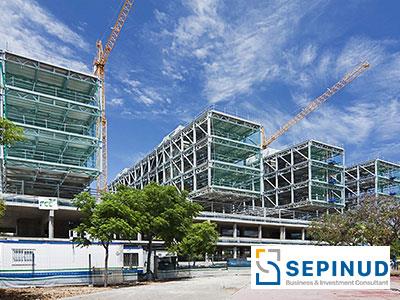Government of the Islamic Republic of Iran The Supreme Council of Iran’s Free Trade, Industrial & Special Economic Zones
Abstract:
By discovering new Natural Gas Deposits in all over the world, NGL industry is developing
day by day. Natural Gas Liquids (NGLs) are components of natural gas that are separated
from the gas state in form of liquids during gas purification processes in refineries.
The
natural gas liquids are the raw material for petrol.
NGL is made when natural gas is cooled down to the temperature of minus 260 degrees
Fahrenheit in atmospheric pressure. When it becomes liquid, its volume reduces 615 times,
which can be done by cooling the gas. It also includes 95 percent of Methane and a
few
percent of Ethane, Propane, and other hydrocarbons. There are many utilizations for NGLs
such as petrochemical feedstock, or, residential, commercial, and industrial heating or
cooking fuel. Iran’s NGL production capacity is 7.15 million tons per year. Based on Iran's
1404 (2026) policy vision, it is supposed to reach 24 million tons for which NGL production
units are responsible.
On the Future Outlook of the Islamic Republic of Iran in the Horizon of the Next
Two
Decades, the following goals, in gas industry, have been put forward in its strategic planning
agenda:
• Achieving the second rank of the world's largest natural gas production
• Increased participation in global gas trade through NGL pipelines and other natural
gas forms
• Supplying gas for 95% of cities in the country
• Supplying gas for 40% of villages in the country
• Supplying gas for industries
• Supplying gas for power plants
• Gasification of cars
In order to achieve the above macroeconomic goals, including the increase in natural
gas
production and refining capacity, developing gas transmission lines associated with pressure
booster stations, developing natural gas storage facilities and supplying security, Iran's
gas
industry will require a huge investment of $129 billion.
The purpose of this project is to construct an NGL unit for obtaining liquid gas
from
Gevarzin and Sorkhoon gas fields in Qeshm Free Zone. The sweet gas is used as fuel
in
refineries, and the dry gas is injected into the Iranian natural gas network.
Qeshm Free Zone contains two gas fields; Gevarzin and Sorkhoon. Sweet gas production of
Gevarzin gas field is used as feedstock for Bandar Abbas refinery and Sorkhoon sweet gas is
also used for urban and industrial usage. All in all, 17 hydrocarbon fields of Salakh, Taftan,
Tosan, Dustku, Holor, Forouz, Hengam, North Saleh, and Hormoz have been discovered in
and around Qeshm Free Zone which, with development of these fields, will become one of
the most important gas production centers in Persian Gulf.



 Production Complex.jpg)



.jpg)
.jpg)
.jpg)
